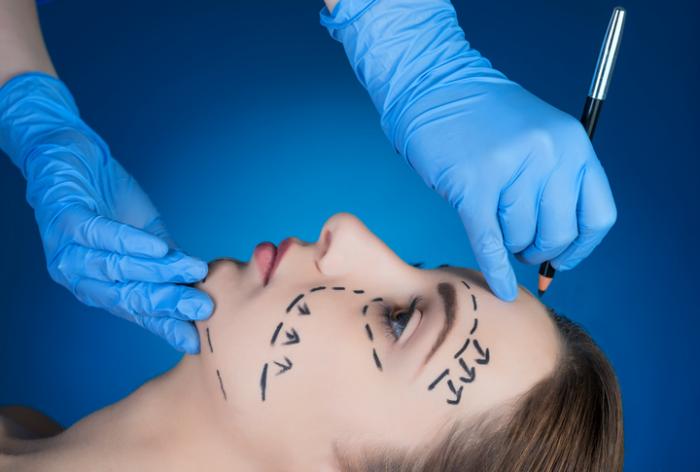Facelift Surgery in Qatar: What It Is, How It Works, and When to Consider It
Facelift surgery, or rhytidectomy, remains one of the most effective and enduring techniques to restore youthful contours of the face and neck. It addresses the deeper layers of facial ageing — not just the skin — producing refined, natural, and long-lasting results.
In Qatar, increasing sun exposure, lifestyle factors, and early collagen decline often accelerate visible signs of ageing. For many patients, facelift surgery offers a powerful solution to rejuvenate facial features while maintaining their individuality and expression.
Understanding Facial Ageing
Facial ageing is a complex process influenced by genetics, sun exposure, lifestyle, and gravity. Over time, collagen and elastin fibres weaken, skin loses elasticity, and fat pads descend, creating sagging cheeks, jowls, and loose skin around the neck.
Non-surgical options such as Morpheus8, fillers, and thread lifts can help in early stages, but when laxity becomes more advanced, a surgical facelift remains the gold standard for natural, comprehensive rejuvenation.
What Is a Facelift?
A facelift is a surgical procedure designed to tighten the skin, reposition underlying facial muscles (the SMAS layer, or Superficial Musculoaponeurotic System), and restore volume to the mid and lower face. It corrects:
- Sagging of the cheeks and jawline (jowls)
- Deep nasolabial folds
- Loose skin around the neck
- Flattened or hollowed midface areas
- Banding or laxity of the platysma muscle in the neck
During surgery, small incisions are made discreetly along the hairline, around the ears, and sometimes under the chin. Excess skin is removed, and deeper tissues are lifted and anchored in a natural position.
Types of Facelift Techniques
Modern facelift techniques have evolved beyond simple skin tightening. Each method targets different levels of ageing and patient needs:
1. Mini Facelift
A less invasive option ideal for younger patients or those with mild to moderate laxity. It focuses on tightening the lower face and jowls using smaller incisions and a shorter recovery period.
2. SMAS Facelift
This is the most commonly performed modern facelift. It lifts and repositions the SMAS layer, resulting in a more natural and longer-lasting outcome than older skin-only lifts.
3. Deep Plane Facelift
Considered the most advanced technique, the deep plane facelift repositions both the SMAS and overlying fat pads as one unit, achieving more significant rejuvenation with less tension on the skin. It provides a refreshed, youthful appearance without the “pulled” look.
4. Midface Lift
Targets the central face — the cheeks, tear troughs, and nasolabial folds — by elevating the midface structures. Often combined with eyelid or brow procedures for balance.
5. Neck Lift
Many patients benefit from combining facelift and neck lift to address loose neck skin, vertical bands, and under-chin fat. The result is a smooth, continuous contour from the jawline to the collarbone.
Who Is a Good Candidate for a Facelift?
A facelift is ideal for individuals who:
- Have visible sagging of the lower face or neck
- Notice jowls or deep folds that non-surgical methods cannot correct
- Want long-lasting rejuvenation
- Are in good physical and mental health
- Have realistic expectations about surgical outcomes
Age is not the determining factor — the condition of the skin, bone structure, and personal goals matter more. Many patients in their 40s and 50s in Qatar opt for early facelift procedures to maintain a youthful, natural look rather than waiting for advanced ageing.
The Facelift Procedure: Step by Step
- Consultation and Planning – A detailed facial assessment is performed, often including photographic analysis and discussion of surgical goals.
- Anaesthesia – The procedure is performed under general or local anaesthesia with sedation in an accredited hospital.
- Incision Placement – Incisions are strategically hidden around the hairline and ears.
- SMAS or Deep Tissue Repositioning – The surgeon lifts and secures deeper facial layers to a natural, youthful position.
- Skin Redraping and Closure – The skin is gently redraped without tension, and fine sutures are used for minimal scarring.
- Recovery – Most patients are discharged the same day or after an overnight stay for monitoring.
Recovery and Expected Results
Initial swelling and bruising resolve over 10–14 days. Sutures are usually removed within one week. Most patients can resume normal social activities after 2–3 weeks, with final results visible after three months as tissues settle naturally.
A facelift can take 10–15 years off one’s appearance, depending on skin quality and lifestyle. Results typically last 8–12 years, though ageing continues gradually. Maintenance with non-surgical treatments such as Morpheus8, Profhilo, or laser resurfacing can extend the benefits.
Risks and Safety Considerations
All surgical procedures carry some risks. For facelift surgery, these include:
- Temporary bruising and swelling
- Numbness around the ears or cheeks (usually temporary)
- Haematoma (collection of blood under the skin)
- Infection (rare with sterile surgical technique)
- Scarring (typically well concealed)
Dr Ali Soueid performs all surgeries in fully accredited hospital theatres with experienced anaesthetists and strict safety protocols to minimise these risks.
Why Choose Dr Ali Soueid for Facelift Surgery in Qatar
Dr Ali Soueid is a UK-trained Consultant Plastic, Aesthetic, and Reconstructive Surgeon with over 25 years of experience in facial rejuvenation. His approach blends surgical precision with aesthetic artistry to achieve refined, natural outcomes.
At Cosmetic Aesthetic Plastic Surgery in Doha:
- Every facelift is custom-designed to the patient’s anatomy and goals.
- Dr Soueid combines Deep Plane, SMAS, and neck lift techniques for balanced rejuvenation.
- His surgical expertise ensures minimal scarring and optimal facial harmony.
- All procedures are performed under the highest safety and ethical standards.
Patients value his honest consultation process, meticulous technique, and commitment to long-term care.
When to Consider Non-Surgical Options
For patients with early signs of ageing or those not ready for surgery, several alternatives exist:
- Morpheus8 radiofrequency microneedling – for skin tightening and collagen renewal
- Dermal fillers and fat grafting – to restore lost facial volume
- Thread lifts – for subtle, temporary lifting
These can delay the need for surgery or maintain results after a facelift.
Final Thoughts
A facelift remains the gold standard for comprehensive facial rejuvenation when non-surgical treatments can no longer deliver sufficient correction. Modern surgical methods allow patients to achieve elegant, natural-looking results with shorter recovery times and greater precision than ever before.
If you are considering facelift surgery in Qatar, choosing a highly qualified plastic surgeon is crucial. Dr Ali Soueid combines advanced surgical skill, international training, and an understanding of aesthetic balance to help patients look refreshed and confident — not different.





